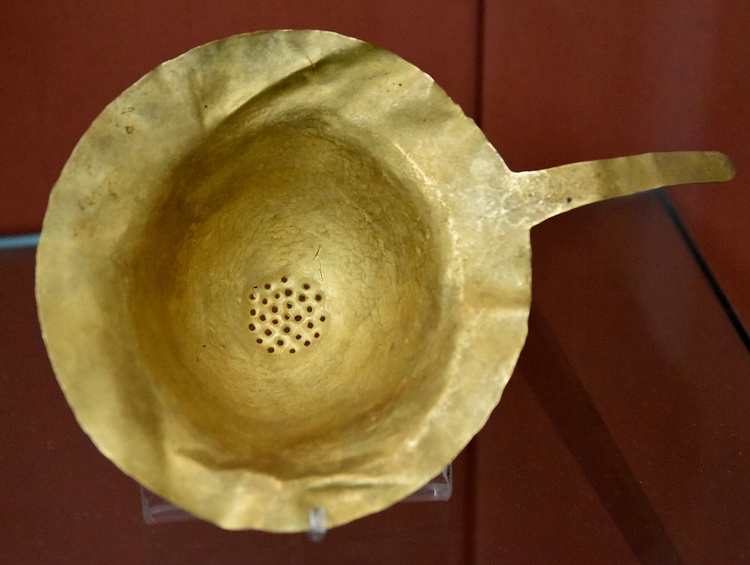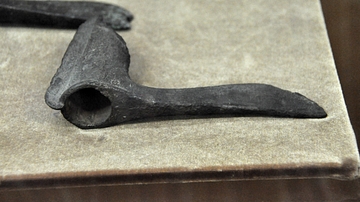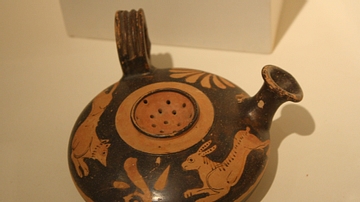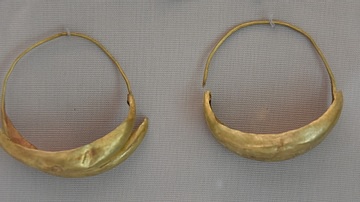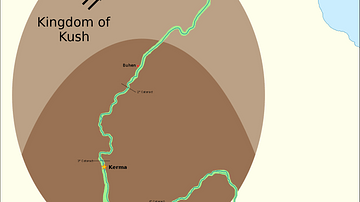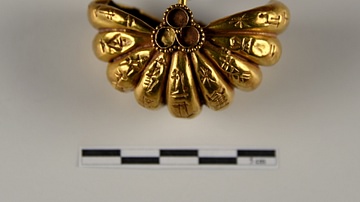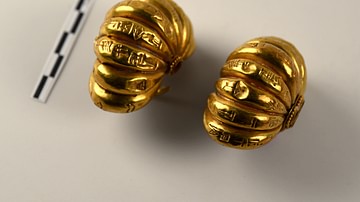Illustration
This gold strainer was roughly shaped and has a short handle. It was found at the bottom of the pit of Queen Puabi's grave. Beer and wine were drunk in Mesopotamia from at least the fourth millennium BCE and it is possible that the strainer was used to remove any residue when serving. Gold is not found in modern-day Iraq and it might have been imported to Ur from modern-day Iran, Turkey, Afghanistan, Egypt, or Sudan. Early Dynastic Period, circa 2600 BCE. From the Royal Cemetery at Ur, Southern Mesopotamia, modern-day Iraq. Part of objects allotted to the British Museum from Ur excavation season 1927-1928. (The British Museum, London).
About the Author
Cite This Work
APA Style
Amin, O. S. M. (2018, February 20). Mesopotamian Gold Strainer. World History Encyclopedia. Retrieved from https://www.worldhistory.org/image/8124/mesopotamian-gold-strainer/
Chicago Style
Amin, Osama Shukir Muhammed. "Mesopotamian Gold Strainer." World History Encyclopedia. Last modified February 20, 2018. https://www.worldhistory.org/image/8124/mesopotamian-gold-strainer/.
MLA Style
Amin, Osama Shukir Muhammed. "Mesopotamian Gold Strainer." World History Encyclopedia. World History Encyclopedia, 20 Feb 2018, https://www.worldhistory.org/image/8124/mesopotamian-gold-strainer/. Web. 05 Jul 2025.

